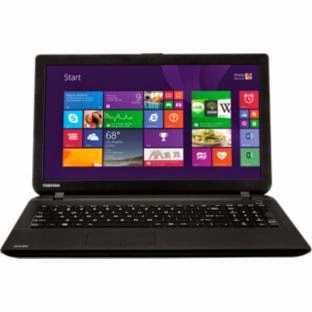I've just been working on an old Windows Vista laptop which I was asked if I could fix. Apparently it had had problems with a virus and the owner couldn't get on to her online email.
Trying to boot the laptop only resulted in endless failed attempts by Windows to repair itself- the system was obviously broken. I managed to find a Vista repair disc, which fixed the boot problems. Microsoft of course doesn't make these discs available, and tries to take down any copies that appear on the web. You are apparently supposed to use the system recovery partition- and then spend many hours downloading all the updates and service packs that have accrued over the last decade.
Booting into Windows was just the beginning of my problems. The laptop was locked up with constant I/O on the hard drive and processes taking up most of the available memory and CPU.
I booted into Safe Mode and used the AVG removal tool to remove AVG, which was loading into memory but not working, and installed some updates which a web search suggested might be the reason
svchost.exe was locking up the system after a normal boot- automatic update trying and failing to install updates.
After that, a fairly normal boot. Multiple malware scans found only one Adware file and a few PUPs. However, I noticed that the C: partition was almost full- over 30GB- and showing red. Vista seems to store user files in C:, so I imagined I'd find a huge collection of photos or MP3s taking up the space- but no, it seemed to be Windows cruft: packages of updates left after the installation of Service Packs.
The D: partition was almost empty, and a similar size to C:, so I thought I'd resize C: to give the system more room.
Now Windows Vista will let you shrink D:, but it won't expand C:, because it's a boot partition.
I came across a post on
answers.microsoft.com which kindly suggest some free programs which would shrink the D: partition and extend the C: partition. I used the first one, and here's where the real trouble began.
I noticed an annoying pop-over add for System Mechanic which told me it was a Microsoft Trusted partner, and if I ran it's scan, I could save myself from endless system crashes. (Microsoft partners tell you that Windows is so rubbish it will keep on crashing unless you emply a third party to fix it?)
Well I ignored that and used the partition program from EaseUS to resize the partitions, and it did work really well. OK, I was only going to use it once, so thank you for making it available for free. Software developers have to make money, so seeing an advert seemed a reasonable price to pay for using a good bit of software.
You might think that if Windows is going to fill its partition with cruft, they might give you the tool to fix it, but they've been in trouble before for trying to monopolise the market, so maybe they decided to throw a few crumbs down the food chain.
The problem is that where there are crumbs, there are bottom feeders lurking.
When I tried to update a program on the computer, I found that the web browsers were showing pop-up advertisements and redirecting me to other sites.
An example of the most stupid adware that makes browsing the internet almost impossible: if you can get to the site you want to visit without being redirected, it is almost obscured by advertisements, and links never seem to take you to where you want to go.
A scan by
MalwareBytes revealed Conduit, OpenCandy and Roll Around were the culprits. Getting rid of everything found seemed to fix Internet Explorer, but Chrome was still showing Roll Around adds in web searches and redirecting to unwanted sites.
AdwCleaner and
ESET Online Scan found and removed more traces, but Chrome was still infected: evidently some sort of hidden extension. In the end, I had to uninstall Chrome and reinstall it to fix the problem.
EaseUS should be ashamed of themselves. They have a good product, which people try to use to fix a problem, but their way of getting a financial reward for their work leaves the users of their product virtually unable to use the internet, and very probably, like me, angry and frustrated, although unlike me, possibly not having the skills to remove the despicable adware they have installed.
There are ways to get paid for a supplying a product that don't involve abusing your users- asking for a donation or a purchase of a full product, or showing ads that don't inconvenience the user.
The sort of model that MalwareBytes and AdwCleaner and ESET use- at least the existence of bottom feeders provides food for these more salubrious eaters.
But that reminds me of what the guy who made available the Vista disc I used in the first step of fixing this laptop wrote to accompany it:
I strongly advise you to at least test the best operating system available TODAY, namely Linux MINT Xfce (try Linux Mint 17 Xfce, codename 'Qianna', for newer PC's with Windows 7/8 or Linux Mint 13 Xfce, codename 'Maya', for older PC's with XP or Vista): you will be pleasantly surprised how much better Mint is compared to Windows and it is FREE, FOREVER FREE [and you will be forever free not only from the expenses associated with Windows but also from all the angst, all the hassles, all the troubles, all the virii and all the spyware associated with Windows!].
I'm not a Mint user myself, but having
just installed it on an old computer,I'm inclined to agree with him: if you have an old Vista computer and could do without all the hassle I have just described, give Mint a go!
The ecosystem is a lot nicer.









